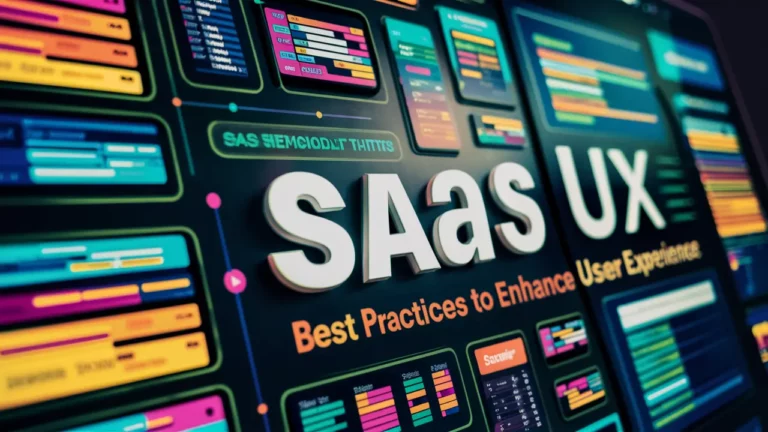Mastering No-Code Saas: Top 10 Tools for Saas MVPs in 2024

As technology evolves, the demand for streamlined “no-code SaaS” solutions rises. In software development, no-code tools have revolutionized the creation of innovative products without traditional coding. This article explores building a Software as a Service (SaaS) Minimum Viable Product (MVP) without writing a single line of code, utilizing the top 10 no-code tools in 2024.
Our audience supports Ahcrypto. When you click on the links on our site, we may earn an affiliate commission at no extra cost to you. Learn More.
Key Takeaways
No-code app builders have gained immense popularity for their ability to empower individuals to create applications without coding skills. These innovative platforms provide a user-friendly interface with drag-and-drop functionalities, allowing users to quickly build websites, mobile apps, web apps, and more. In this dynamic landscape, leveraging these tools to create a successful SaaS MVP can significantly accelerate development and streamline the path to market entry through drag-and-drop interfaces.
Overview of No-Code Tools
No-code app builders are software platforms that enable users to create applications and solutions without writing custom code. These tools often offer templates, integration options, and pre-built functionalities, allowing individuals to develop complex applications without coding knowledge. By utilizing drag-and-drop interfaces and pre-configured components, users can quickly prototype, test, and launch applications within a fraction of the time it would traditionally take using custom coding.
Significance of Building SaaS MVP Without Code
Building a SaaS MVP without code offers numerous advantages for startups and entrepreneurs looking to enter the market swiftly and cost-effectively. By eliminating the need for coding skills, individuals can focus on creativity, user experience, and market validation without being hindered by technical constraints. No-code tools empower users to iterate rapidly, integrate feedback seamlessly, and refine their product offerings based on real-time data, enabling them to create a competitive SaaS product that resonates with their target audience.
Understanding SaaS and No-Code Development

Explaining SaaS
Software as a Service (SaaS) has transformed the software industry by offering cloud-based solutions that are online. This model allows users to access applications via a web browser without complex setup or installation, thanks to no-code solutions that leverage drag and drop and built-in tools. SaaS products are typically subscription-based, allowing users to pay for services as needed. By leveraging SaaS tools, businesses can scale effortlessly, access updates seamlessly, and reduce the burden of maintenance and infrastructure costs. The SaaS market continues to expand rapidly, catering to various industries and offering multiple applications to meet diverse needs.
Introduction to No-Code Development
No-code development refers to creating software applications using visual interfaces and configuration instead of traditional programming languages. This approach empowers individuals without coding expertise to design and deploy applications rapidly. No-code platforms offer drag-and-drop functionalities, pre-built templates, and integrations that simplify app development. By eliminating the necessity for writing code, no-code development streamlines the creation of applications, allowing users to focus on functionality and user experience. Embracing no-code tools can accelerate product development, reduce time to market, and foster innovation in the software development landscape using best no-code practices.
Benefits of No-Code Tools for Building a SaaS
No-code tools, including drag-and-drop and built-in tools, offer significant advantages for developing a Software as a Service (SaaS) product without traditional coding. One important benefit is that Speed and Efficiency are significantly enhanced with no-code tools that allow straightforward design and feature integration without coding. They bring speed to the development process and the ability to create an app without coding. These tools enable rapid prototyping and testing by providing user-friendly interfaces and drag-and-drop functionalities, accelerating the path to market entry.
Another critical advantage is creating applications without coding and leveraging drag-and-drop functionalities. No-code platforms achieve cost-effectiveness by allowing for the creation of sophisticated applications without any coding. They eliminate the need for costly coding resources, allowing startups and entrepreneurs to invest more in product innovation and market validation. This cost-efficient approach enables individuals to focus on refining their SaaS MVP without the financial burden of custom coding.
Top No-Code Tools for Building a SaaS MVP

Introduction to No-Code Tools
They are introducing the concept of no-code app builders, which empower users to build applications without writing a single line of code. These tools provide pre-configured components and templates, making it easier for individuals to create websites, mobile apps, and web apps with minimal effort.
List of Top 10 No-Code Tools for 2024
Explore the top 10 no-code tools for building a successful SaaS MVP in 2024. These tools offer a range of features, including drag-and-drop functionality, integration options, and the ability to create complex applications without coding skills. Discover how these platforms can help streamline app development and bring your SaaS product to market efficiently.
Case Studies of Successful SaaS Products Built Without Code
Examining real-world examples of successful Software as a Service (SaaS) products built without code, leveraging drag-and-drop functionalities, provides valuable insights into the potential of no-code development. These case studies demonstrate the effectiveness of leveraging no-code tools to create innovative solutions and bring them to market efficiently. By studying these success stories, aspiring entrepreneurs and startups can gain inspiration and learn from the strategies implemented by companies that have achieved remarkable results using no-code platforms.
Lessons Learned from No-Code SaaS Platforms
Exploring the lessons from utilizing no-code SaaS platforms can offer valuable takeaways for individuals on their no-code development journey. These lessons may include best practices, common pitfalls to avoid, and strategies for maximizing the benefits of no-code app builders using tools like drag and drop. By understanding the experiences of others in the field of no-code SaaS development, entrepreneurs can enhance their approach and increase the likelihood of building a successful SaaS product without traditional coding.
Future Trends in No-Code SaaS Development

Anticipating the future trends in no-code SaaS development is crucial for staying ahead in the rapidly evolving technological landscape. By staying informed about the latest innovations in no-code platforms, individuals can identify new opportunities for growth and advancement in the field of SaaS product development. Future trends may include enhanced features, improved integration capabilities, and increased automation in the no-code development process, making it easier for those who want to build internal tools without coding. Understanding these trends can help aspiring developers and entrepreneurs align their strategies with the evolving demands of the market.
Innovations in No-Code Platforms
Continuous advancements in no-code platforms drive innovation in SaaS product development and revolutionize how applications are built and deployed, mainly through drag-and-drop and built-in tools. New features such as artificial intelligence integration, advanced customization options, and seamless collaboration tools are reshaping the capabilities of no-code platforms. These innovations aim to streamline the development process further, enhance user experience, and expand the possibilities for creating sophisticated SaaS solutions using tools like drag and drop without coding.
Growth Potential of No-Code SaaS Solutions
The growth potential of no-code SaaS solutions remains promising as more individuals and businesses recognize the advantages of building Software without traditional coding. With the increasing demand for user-friendly development tools and the rising trend of no-code application building, the market for no-code SaaS solutions is expected to expand significantly in the coming years. This growth presents exciting opportunities for entrepreneurs, startups, and established companies to leverage no-code platforms and create innovative SaaS products that cater to evolving customer needs.
Conclusion
In conclusion, the rise of no-code SaaS platforms has transformed the software development landscape, enabling entrepreneurs and businesses to launch and scale innovative digital products with unprecedented speed and reduced costs. These platforms have democratized access to technology, allowing non-technical founders to bring their no-code micro SaaS ideas to life.
The best no-code SaaS builders offer robust tools for creating, testing, and deploying applications without extensive coding knowledge. As we look towards the future, no-code SaaS development remains a promising avenue, providing a gateway for continuous innovation and catering to a growing demand for agile, user-friendly solutions.
Embracing these platforms accelerates the development process and opens up a realm of possibilities for creative and effective SaaS solutions.
Keep updated on all of our latest tips here.





